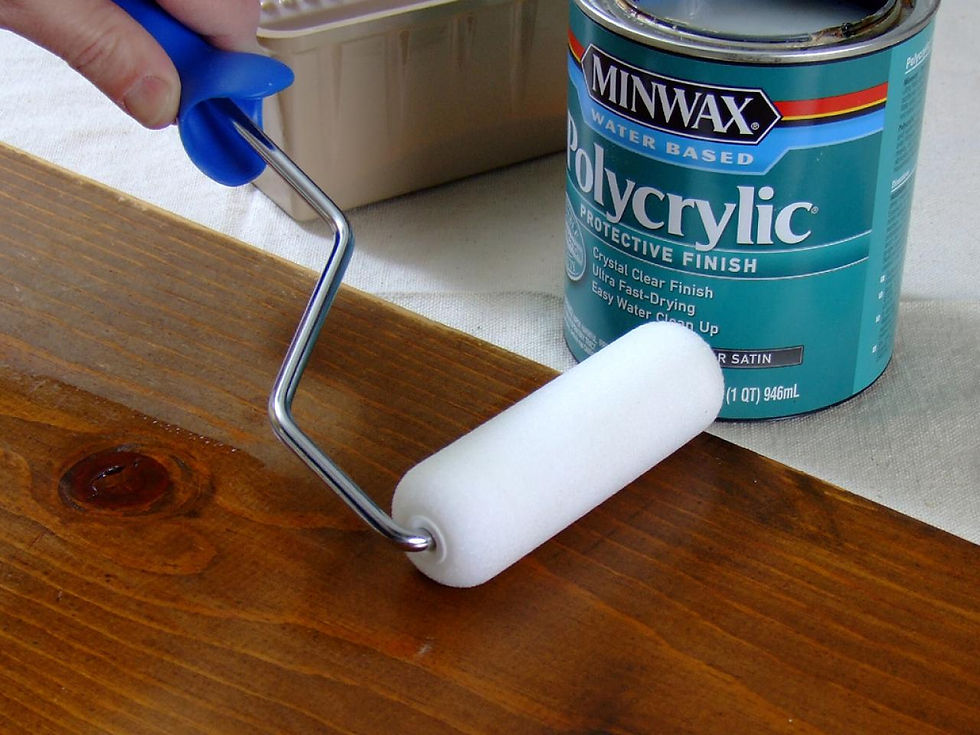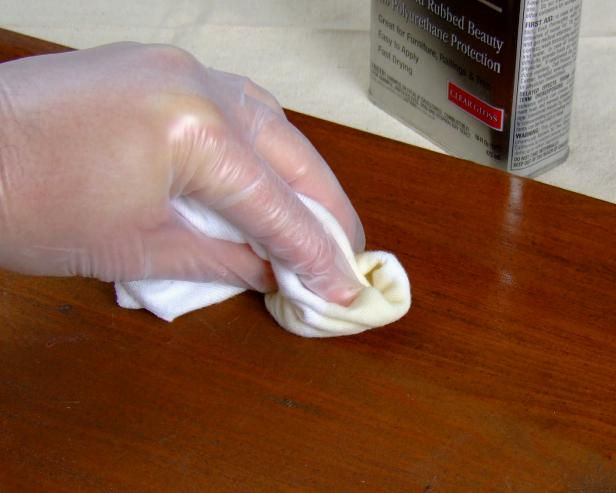Wooden furniture, wooden floors and fixtures require protection to look like new and last in the long run. Wood finishes help to retain the natural beauty of the grain while providing protection to wood.
Wood finishes are seen in two categories. Certain wood finishes are used in layers and cure hard. Other finishes are penetrating and do not leave a hard film being an oil-based solution. Let’s check out different types of wood finishes.
WOOD FINISHES
LACQUERS:
This wood finish is fast-drying and comes in a clear liquid form. It is useful to enhance the wood grain and is easily applied by brush. While it evaporates upon application, it also cures the wood.
Lacquer provides the extremely intense gloss finish often used on many Asian-inspired or ultramodern furnishings. It is extremely durable and resistant to damage; however, over time it can begin to discolor and become scratched. Wonder why it's so smooth? It's applied via a sprayer, because it is thinner than the other finishes. You'll need a high-volume, low-presser (HVLP) sprayer and a well-ventilated and spacious workspace to apply it.

VARNISH:
This forms a film when used on wooden furniture. Colourless in nature, varnish can also be applied on stained wood. It protects wood from heat, water and solvents. Technically speaking, all types of wood finishes that are solvent-resin mixtures belong to the category of varnishes! The resin used in varnish dictates the type of finish.
The name of this finish often is used generically for a finish or top coat. It's very durable because it contains a higher ratio of solids. Spar varnish is perfect for outdoor projects and for raw wood used for exterior doors and trim on rustic homes. In addition to protecting the wood, it also provides natural ultraviolet light protection. Spar varnish is often used on items that will be near or on the water, like a wood boat, decks, beach chairs, etc. Apply using a natural-bristle brush.

SHELLAC:
Shellac comes in a variety of colours depending upon its components. Being a solvent, it is useful to mend damage seen on wood surfaces. It can be combined with varnish and gives a clear shine. It can be damaged with water.
This finish is actually a natural product that is very safe once dried and hardened. In addition to adding a protective coat, it also can add a warm amber color to wood. It can be affected by heat (white rings will appear under a hot bowl or mug) or chemicals, so a kitchen table might not be the best place to use it. Fine furniture items can be greatly enhanced with shellac. Some shellac manufacturers recommend using it as a protective coat on non-wood items. Apply it with a natural bristle brush or with a cotton rag.

POLYURETHANE:
Essentially a plastic in the form of a liquid until it dries, polyurethane is available in both water- and oil-based options, and comes in varieties from satin to glossy.
Water-based polyurethane is popular because of its low odor and low toxicity. It goes on clear without adding a slight color that oil-based versions can, and it dries much faster. As with shellac, water-based polyurethane won't hold up well to heat and chemicals. It's good for bookcases, desks, side tables and picture frames — anything that won't be exposed to extremes.
Minwax Polycrylic is an example of a fortified water-based polyurethane than can stand up a bit better to rough conditions. It also can go over oil-based finishes and can be applied using synthetic-bristle brushes, a foam roller or a rag, as can other water-based polyurethanes. Water-based oil-modified polyurethane is a relatively new product that combines the durability of an oil base with the cleanup of a water base. This product can actually be used on wooden floors.

Oil-based polyurethane is slightly more durable than water-based, especially when it comes to handling heat, so a kitchen table is a good candidate. It adds a slight color tone and will bring out the richness of wood.
When working with oil-based polyurethane, use a respirator in a well-ventilated area. Apply using a natural-bristle brush or rag. Oil-based takes much longer to dry and cure than water-based.
Both oil- and water-based polyurethane can be applied to latex/acrylic paint; however, oil-based polyurethane will create a yellow or amber hue, especially to light colors. To add durability without affected color, use a water-based finish.

For more information contact us on contact@dezinebox.io
Credits:
https://www.diynetwork.com/how-to/skills-and-know-how/painting/whats-the-difference-between-polyurethane-varnish-shellac-and-lacquer
http://www.urbanhomez.com/decor/different_types_of_wood_finishes

Comments